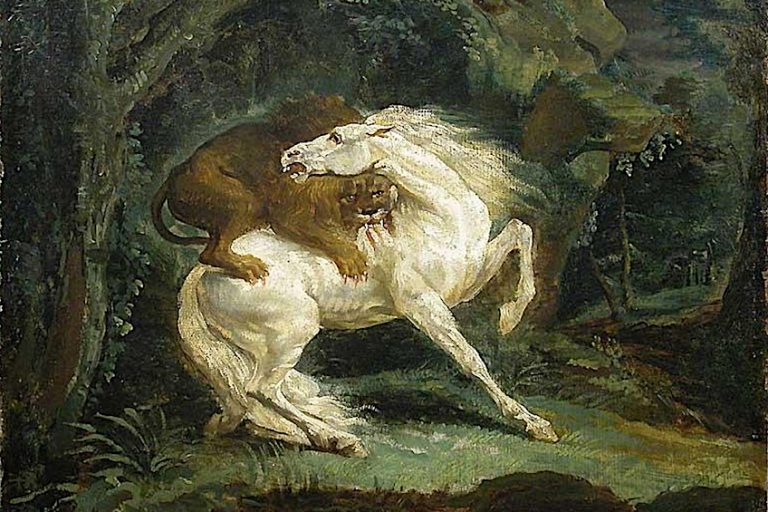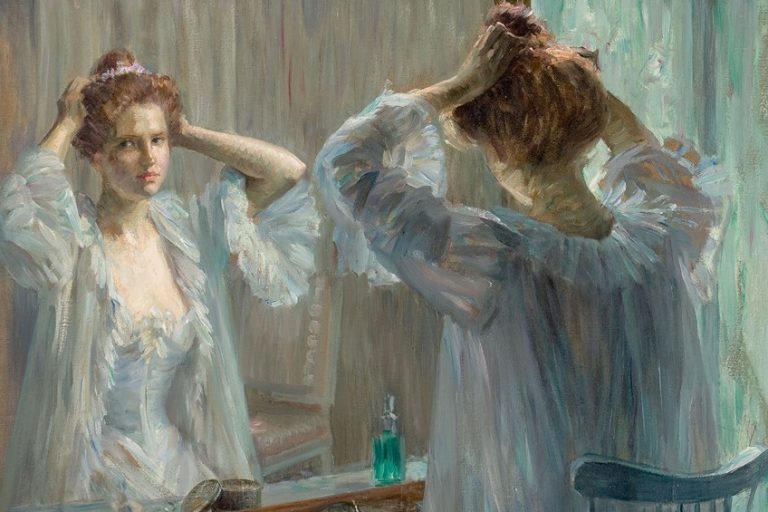Honoré Daumier – The Famous French Satirist
Honoré Daumier, a prominent 19th-century French artist, is celebrated for his satirical and politically charged works. Born in Marseille in 1808, Daumier’s artistry extended across painting, lithography, and sculpture, making a lasting impact on French art and social commentary. His caricatures and illustrations, often depicting scenes of everyday life and critiquing the political and social issues of his time, earned him recognition as a master of realism and a precursor to modern cartooning. Daumier’s keen observations and sharp wit continue to resonate, highlighting his enduring relevance in the world of art and social commentary.
Key Takeaways
- Daumier was a French artist whose lithographs satirized the politics of 19th-century France.
- His artistic talents included painting and sculpture, which anticipated Impressionist techniques.
- Despite his death in 1879, Daumier’s legacy endures through his influence on modern art and social commentary.
Early Life and Artistic Beginnings
| Birth | February 26, 1808 |
| Death | February 10, 1879 |
| Place of Birth | Marseille, France |
| Genre of Work | Realism and caricature |
Honoré Daumier was a French artist, known for his profound influence on 19th-century satirical lithography. Born on February 26, 1808, in Marseille, France, Daumier witnessed and responded to significant socio-political events through his art. His work spanned painting, sculpture, and printmaking, but he is most famed for his sharp caricatures that critiqued the social and political landscape of France during his lifetime, including the July Monarchy and the Second Empire.

Daumier’s contributions to art extended beyond satire; his skill in painting and sculpture played a role in the transition to modern art. Although his paintings remained largely unrecognized during his lifetime, they exhibited techniques that would influence the Impressionist movement.
Daumier’s legacy persists not only in the breadth of his own work but also in his impact on later generations of artists who drew inspiration from his commitment to social commentary and his innovative artistic approach.
Childhood and Family Background
Honoré-Victorin Daumier was born in 1808 in Marseille, France, into a family with a background steeped in the artisan trade. His father worked as a glazier, but eventually sought a different path by attempting to become a poet in Paris. Despite the elder Daumier’s ambitions, the family’s financial standing was not significantly improved by this switch in careers.
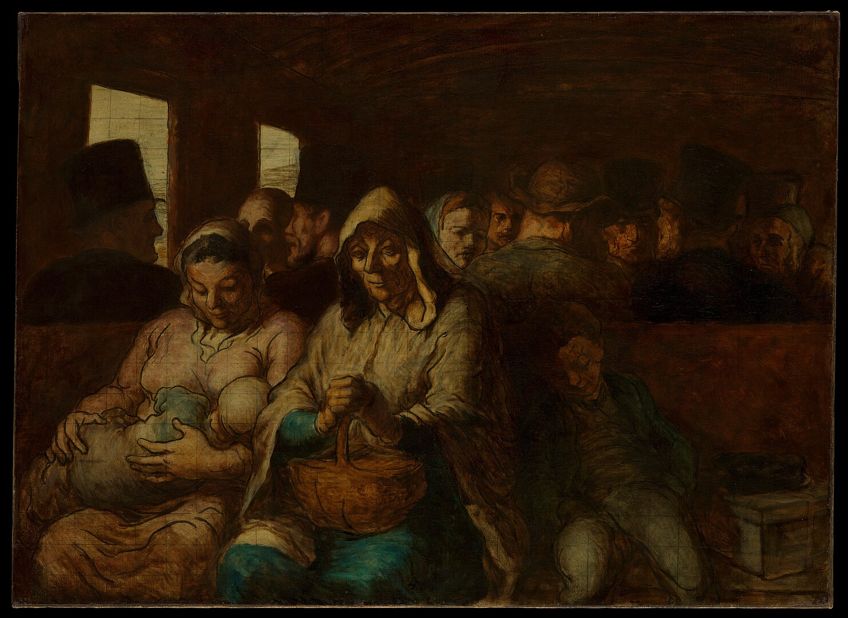
Initial Artistic Training
Daumier’s initial artistic training, which began after the family’s relocation to Paris, was multifaceted. He pursued informal studies under Alexandre Lenoir, which undoubtedly influenced his early development. It was, however, an eventual association with Charles Philipon, a prominent publisher known for his satirical work, which marked a turning point in Daumier’s career.
Under Philipon’s guidance, Daumier honed his skills and began to establish himself as an insightful caricaturist, setting the stage for his later renown.
Career and Artistic Development
Honoré Daumier was a pivotal figure in 19th-century French art, whose career spanned lithography, painting, and sculpture. His work provided incisive commentary on the society and politics of his time.
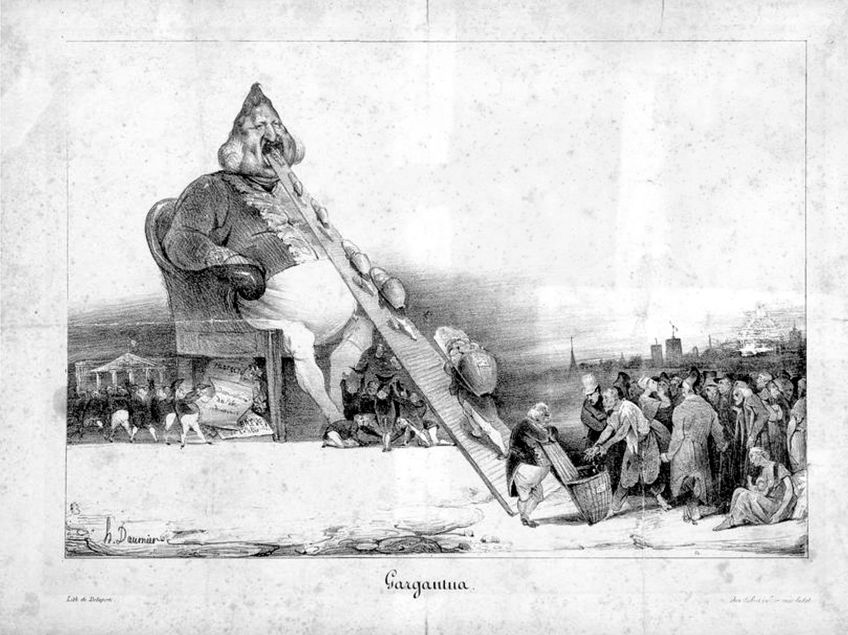
Lithography and Caricatures
Daumier began his artistic career in lithography, contributing to periodicals like La Caricature and later Le Charivari. His lithographs were celebrated for their critical engagement with the bourgeoisie, politicians, and the monarchy. Caricatures, which he produced prolifically, became his primary method for satirizing the social and political landscapes of France across decades. Notable works in lithography include:
- Gargantua (1831): A scathing political caricature critiquing King Louis-Philippe.
- Rue Transnonain (1834): Powerful social commentary on government oppression.
Through his prints, Daumier championed the voice of the common people against the injustices witnessed during the July Monarchy and the Second Empire.
Paintings and Sculptures
Transitioning beyond paper, Daumier expressed his artistic vision through paintings and sculptures. Although less known during his lifetime as a painter and sculptor compared to his fame as a caricaturist, his artwork in these mediums exhibited a profound understanding of Realism. Some key artworks include:
- Ratapoil (1851): A satirical sculpture exposing the propagandist agents of Napoleon III.
- The Third-Class Carriage (c. 1862 – 1864): A compassionate glimpse into the lives of working-class travelers.
Daumier’s endeavors in sculpture, while fewer, still had a profound impact, displaying his versatility as an artist.

Influence and Artistic Style
Daumier’s influence in art is characterized by his marriage of political engagement with the aesthetics of the Romantic and the Realist movements. He didn’t simply reflect society but imbued his work with a depth of humanity, critiquing the systems of power. His unique approach elevated him from a mere caricaturist to a historical commentator through visual means.
Daumier’s artistic style pushed the boundaries of expression and conveyed a confident, clear, and neutral engagement with the events of his time, cementing his place as a key figure in the tapestry of French art history.
- Caricatures: Exaggerated features to depict social and political commentary.
- Paintings: Often captured the struggles and everyday lives of the lower class.
- Sculptures: Utilized to parody public figures with a satirical edge.
Major Works and Themes
Honoré Daumier’s work is renowned for its critical view on social and political issues of 19th-century France. His artwork encapsulated the spirit of his time, from the lives of the common folk to the actions of the ruling classes.

Social and Political Commentary
Daumier was a master at capturing the essence of France’s social and political environment. Gargantua, one of his most famous works, is a satirical lithograph featuring King Louis-Philippe as a voracious giant sitting on a throne, devouring bags of money extorted from the working class. Daumier’s critical view often landed him in trouble with the authorities, depicting lawyers, judges, and politicians with piercing irony.
The Rue Transnonain lithograph stands out as particularly potent, depicting the harrowing aftermath of a government crackdown on civilian protest.
- Themes covered: Abuse of power, class tensions, government criticism
- Notable pieces: Gargantua (1831), Rue Transnonain (1834)
Portraits of Everyday Life
Beyond the realm of political satire, Daumier also portrayed the everyday struggles and scenes of the working-class and poor. His empathy for humanity shines through in paintings like The Third-Class Carriage, which spotlights the crowded and uncomfortable conditions of train travel for ordinary people during the era of rapid industrialization.
- Themes covered: Social realism, impact of industrialization on everyday life
- Notable pieces: The Third-Class Carriage (c. 1862 – 1864)
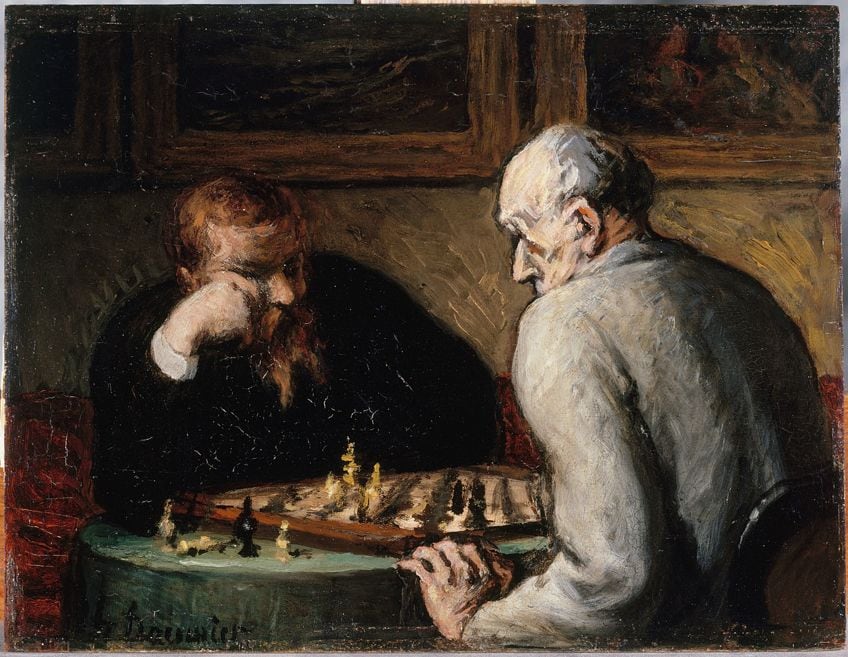
Contribution to Legal and Journalistic Illustration
Daumier’s contribution to art extended to legal and journalistic illustration. His series of prints that depict the legal system, like attorneys, judges, and defendants, are both insightful and admonishing, emphasizing the often grotesque nature of legal proceedings. Daumier worked for the journal, La Caricature, where he produced many lithographs documenting public figures and the injustices of his time.
His work in this field not only brought to light the critical issues of his era but also influenced future generations of artists.
- Themes covered: Judicial critique, role of press in society
- Notable pieces: Series of prints on legal proceedings
Legacy and Posthumous Recognition
Honoré Daumier’s legacy extends beyond his lifetime, gaining recognition for his contributions to art long after his passing in 1879. His posthumous acclaim touches upon his influence, the collections that preserve his work, and his relevance today.

Reputation and Influence
Honoré Daumier’s reputation as a master caricaturist and realist grew after his death. Though celebrated for his political and social commentary through his lithographs, it was not until later that his paintings and sculptures received due merit. By 1864, Daumier’s art, rich with commentary on bourgeois society and political upheaval, transcended mere documentation to offer a satirical perspective, particularly with characters like Robert Macaire.
His series, Les Gens De Justice, a scrutiny of the legal profession, remains a testament to his critical eye and artistic prowess.
Collections and Exhibitions
Posthumously, Daumier’s works are collected globally, with significant holdings at institutions like the Walters Art Museum in Baltimore. Exhibitions showcase the breadth of his mediums, including pen and ink, gouache, and his sculptures. Pieces like Nursing Mother and depictions of the everyday struggles of public transport expose Daumier’s keen observation and wit. These institutions maintain and exhibit his legacy, ensuring his continued relevance in the art world.

Influence of Honoré Daumier Today
Today, Honoré Daumier’s influence persists in the art community. His techniques prefigured Impressionism and modern art movements. Daumier’s work remains a critical lens through which viewers can examine the inequities of 19th-century French politics and society—echoing the continued relevance of art as a tool for social commentary and change. His legacy thrives in the satirical potency and the artistic integrity of his oeuvre, cementing his position as a pivotal figure in Western art.
Honoré Daumier’s artistic legacy transcends time, bridging the gap between 19th-century social commentary and contemporary relevance. His sharp wit, keen observations of human behavior, and mastery of various mediums have solidified his position as a pivotal figure in the realms of art and satire. Daumier’s ability to capture the complexities of society with humor and insight remains a testament to his enduring influence on both artistic expression and societal critique. Through his works, Daumier invites us to reflect on the past while recognizing the timeless truths embedded within his art, making him a figure of perpetual fascination and admiration in the art world.
Frequently Asked Questions
How Did Honoré Daumier Contribute to the Development of Realism in Art?
Honoré Daumier is acclaimed for his role in advancing the Realist movement in 19th-century art. He eschewed the idealized forms of Neoclassicism, favoring instead a more authentic and critical representation of contemporary life, which in turn influenced the impressionist techniques.
What Were the Main Themes and Subjects in Honoré Daumier’s Artwork?
The predominant themes in Daumier’s art revolve around the social and political landscape of France in his time. He frequently focused on the plight of the underprivileged, the corruption of politicians, and the follies of the French bourgeoisie, often employing satire as a tool in his lithographs and paintings.
What Is the Historical Significance of Daumier’s Caricatures?
Daumier’s caricatures are historically important for their piercing critique of 19th-century French society and politics. Through his incisive wit and mastery of visual satire, Daumier’s work provided commentary on the Revolution of 1830 through to the downfall of the second Napoleonic Empire, offering invaluable insights into the period’s social dynamics.
Isabella studied at the University of Cape Town in South Africa and graduated with a Bachelor of Arts majoring in English Literature & Language and Psychology. Throughout her undergraduate years, she took Art History as an additional subject and absolutely loved it. Building on from her art history knowledge that began in high school, art has always been a particular area of fascination for her. From learning about artworks previously unknown to her, or sharpening her existing understanding of specific works, the ability to continue learning within this interesting sphere excites her greatly.
Her focal points of interest in art history encompass profiling specific artists and art movements, as it is these areas where she is able to really dig deep into the rich narrative of the art world. Additionally, she particularly enjoys exploring the different artistic styles of the 20th century, as well as the important impact that female artists have had on the development of art history.
Learn more about Isabella Meyer and the Art in Context Team.
Cite this Article
Isabella, Meyer, “Honoré Daumier – The Famous French Satirist.” Art in Context. April 12, 2024. URL: https://artincontext.org/honore-daumier/
Meyer, I. (2024, 12 April). Honoré Daumier – The Famous French Satirist. Art in Context. https://artincontext.org/honore-daumier/
Meyer, Isabella. “Honoré Daumier – The Famous French Satirist.” Art in Context, April 12, 2024. https://artincontext.org/honore-daumier/.




